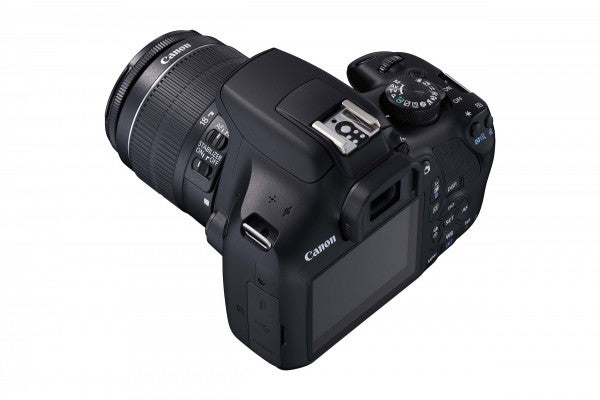We take a closer look at the key features of Canon’s newest entry-level DSLR, the 1300D. Has anything changed from the 1200D?
Canon has announced a new DSLR to replace the two-year-old Canon EOS 1200D. On the surface of things, the new Canon EOS 1300D specifications don’t seem to be a huge leap from its predecessor, so we’re going to have a look at what’s different, and what’s stayed the same.
Canon EOS 1300D sensor

Canon has stuck with its old faithful 18 million pixels for the 1300D, just as it did with the 1200D. While that’s a decent resolution, certainly for beginners, and gives you good scope for cropping a little, it’s still less than Nikon’s entry level DSLR, the D3300, which has 24 million pixels.
While Canon was pretty firmly resolute in sticking to 18 million pixels for some time, it’s perhaps a little surprising that the 1300D hasn’t jumped considering pixel count was upped for the 750/760D, which both have 24.2 million pixel sensors.
Canon EOS 1300D processor
Canon’s latest processor is the Digic 7, which made its debut in the Powershot G7X Mark II. Here in the EOS 1300D, we only have a Digic 4+ processor. By comparison that seems a little lacking, but it is a little better than the 1200D, which sported an original Digic 4 processor. The difference between the 4 and the 4+ is likely to be pretty minimal, however.
Canon EOS 1300D autofocusing
Canon has stuck with the same autofocusing system for the 1300D as was found on the 1200D. That means you get 9 AF points, with the central point being a more sensitive cross-type.
Canon EOS 1300D viewfinder

Both the EOS 1300D and its predecessor, the 1200D, have an optical viewfinder which offers 95% coverage. It’s not particularly unusual for entry-level cameras to have restricted viewfinders such as this, so it’s not that much of a surprise to see Canon sticking with the same device.
Canon EOS 1300D screen
On the plus side, the screen has seen a bump in resolution. While the 1200D had a 3-inch, 460k-dot screen, the EOS 1300D has a 3-inch, 920k-dot screen. That should make looking at your images in playback a more pleasant experience.
Canon EOS 1300D Wi-Fi and NFC connectivity
Probably the biggest, or at least most noticeable and most usable difference between the new 1300D and its predecessor, the 1200D, is the introduction of both Wi-Fi and NFC. While the old camera had no wireless connectivity, the introduction of it for the 1300D means that you can transfer your shots over to a connected device (such as a phone or tablet), or control the camera from a remote location. In a time when there’s a desire to share shots instantly, or from a shoot location, this is something which will probably appeal to a lot of people.
Canon EOS 1300D video
Both the 1300D and the 1200D offer 1080p video recording at 30, 25 and 24fps. All of Canon’s DSLR line-up has full HD video recording, but that’s starting to look a little ordinary at a time where 4K video recording is becoming increasingly popular. It’s no surprise to see full HD only on an entry-level, low-cost camera though.
Canon EOS 1300D price
The Canon EOS 1300D’s price, or at least recommended price, comes out as £329.99 (including a kit lens). At present, you can pick up the older Canon EOS 1200D for just £275 with a lens. Both of those prices represent great value for a DSLR.
Canon EOS 1300D conclusion

Although the 1300D doesn’t represent a huge upgrade from the 1200D – which is perhaps a little bit of a shame – it makes a couple of small, but significant changes, which make paying the extra premium perhaps worth it, especially if Wi-Fi or NFC connectivity is something you’re particularly keen to use.
If, on the other hand, you don’t think Wi-Fi or NFC is something you will use, the 1200D is almost identical to the 1300D in most other ways. While it’s true that the 1300D is not a hugely exciting new release, it’s also something which is under £350 and therefore very appealing for photographers looking for their first camera.





